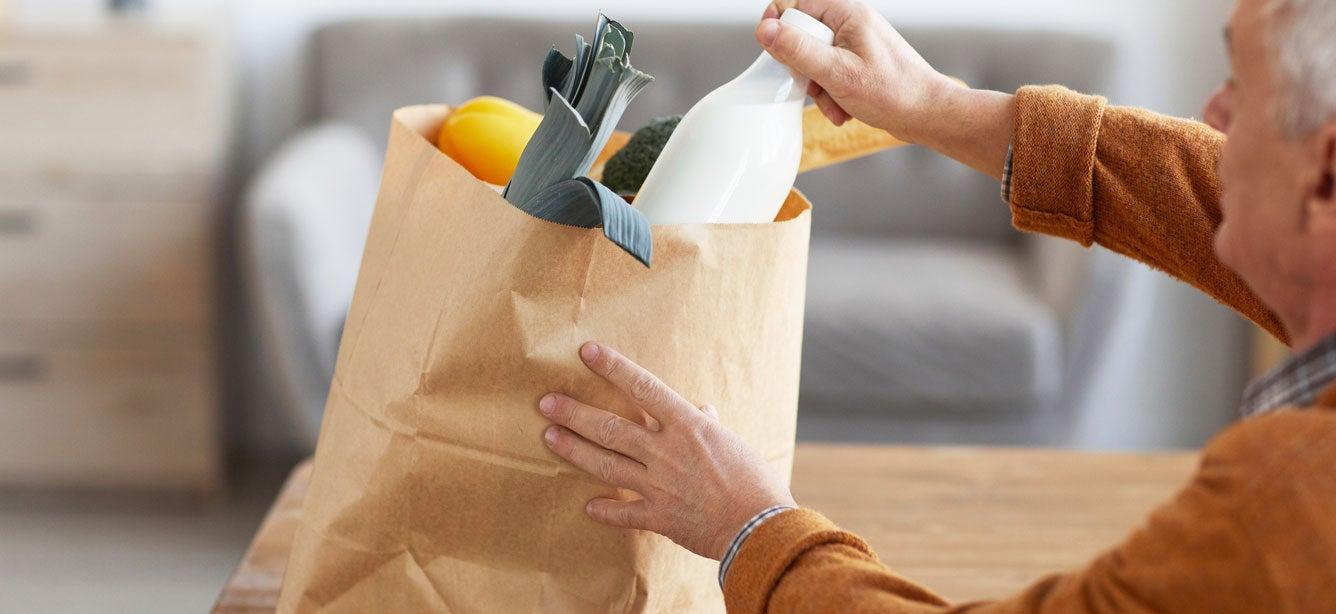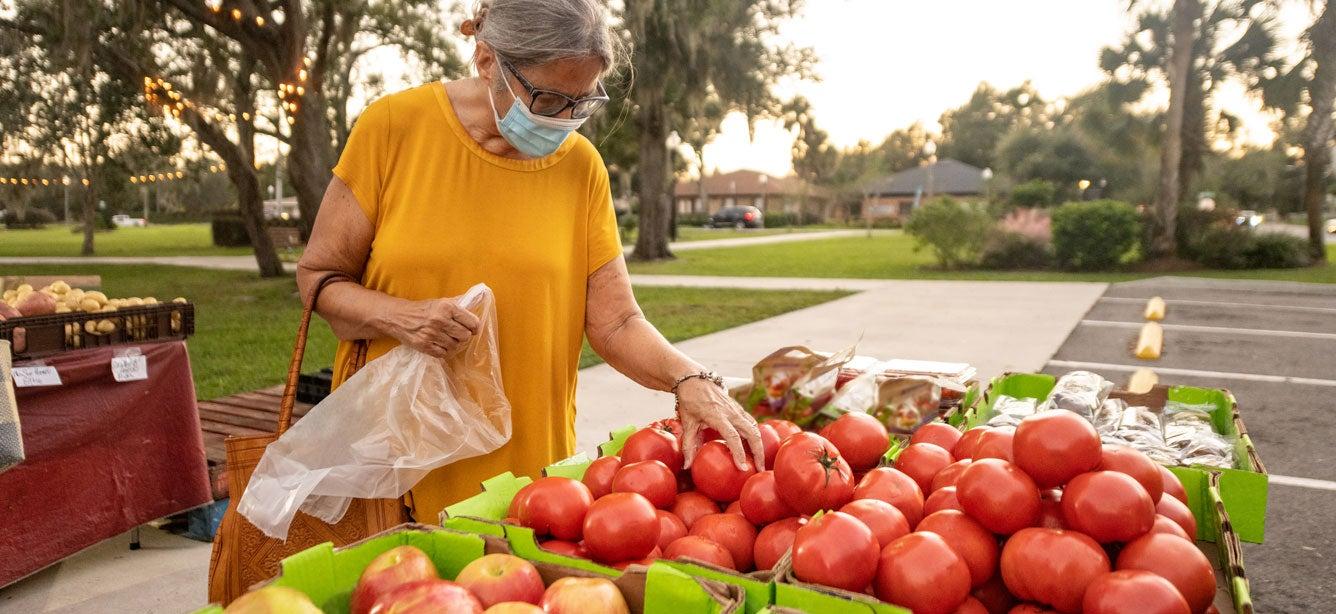
Related Topics
Most communities offer opportunities for older adults to engage in programs and services that improve their lives. Some are designed to promote social connection while others support good nutrition. Congregate meal programs address both goals at the same time.
What is a congregate meal program?
Congregate meal programs provide hot, tasty, nutritious meals to older adults in accessible group settings at least once a day. These settings include:
- Senior centers
- Churches
- Schools
- Farmers markets
- Senior housing facilities
- Restaurants
- Other community settings
Congregate meals usually consist of a hot lunch, but they may also include breakfast or dinner. Menus are focused on meeting USDA dietary guidelines and may reflect the unique cultures of the surrounding neighborhoods. Most programs provide options that cater to common dietary restrictions, such as gluten-free or diabetic-friendly. Transportation may be available for adults who need it to help ensure they don’t miss a meal.
Beyond providing nourishing food to eat and opportunities to socialize, congregate meal sites may offer other services to improve participants’ health and well-being, including:
- Information on managing chronic diseases
- Wellness checks
- Falls prevention education
Do I have to pay for congregate meals?
Meals provided at congregate sites have no set fees, but small donations from participants are encouraged to help support program costs.
The rest of the funding is provided through a government program called the Senior Nutrition Program. Funded by the Administration for Community Living (ACL), this program provides grants to states to help them deliver nutrition services to older residents.
The goals of the Senior Nutrition Program are to reduce hunger, food insecurity, and malnutrition; promote social engagement; and support the overall health and well-being of older Americans. In addition to congregate meals, the program sponsors healthy, home-delivered meals and other nutritional services like nutrition screening, assessment, education, and counseling.
Who can attend congregate meals?
Congregate meal programs are generally open to all adults age 60 and older.
What are the benefits of congregate meals?
Congregate meals offer a variety of benefits, especially for older adults who live alone. These benefits include:
- Improved nutrition: As we age, our dietary requirements change. Through congregate meals, older adults receive nutritious, well-balanced meals on a regular basis. Getting more of the nutrients they require—such as protein, calcium, and fiber—can help prevent chronic conditions like heart disease, hypertension, and osteoporosis. It’s no surprise that 80% of congregate meal participants say the program improved their health.1
- Dietary variety: Congregate meals give older adults the chance to enjoy meals they may not want to or be able to prepare themselves. Having a varied, interesting diet is not only healthy; it enriches our well-being.
- Social connection: Social isolation can lead to loneliness and depression as well as higher blood pressure and early-onset dementia. Attending congregate meals on a regular basis gives older adults the chance to meet new people, nurture lasting friendships, and build a solid support network. It can provide a foundation for a thriving social life that makes it easier to live independently. In fact, 54% of congregate meal participants say the program increased their social opportunities.1
- Greater food security: Having regular access to nutritious food is a vital aspect of overall health. However, in 2019, roughly 5.2 million older Americans faced food insecurity.2 Congregate meal programs help fill the gaps for many older adults, with 54% of participants reporting that a congregate meal supplies at least half of their total food for the day.1
How can I find congregate meal sites near me?
Contact your local area agency on aging to ask about congregate meal programs in your area. They can help you figure out the service and location that’s most convenient for you and address any special needs you may have (rides to and from the meal site, for example). Find your closest AAA by visiting the Eldercare Locator and entering your ZIP code.
If you’re unable to leave your home, ask your area agency on aging about home-delivered meal programs, such as Meals on Wheels.
Additional food assistance: See if you qualify for SNAP food assistance
Congregate meal programs are a great way to get more healthy meals under your belt each week. But what about the rest of the time? With grocery prices rising, are you worried about how far you can stretch your budget?
Help may be available from the Supplemental Nutrition Assistance Program (SNAP), formerly known as food stamps. SNAP helps millions of low-income older adults buy healthy, nutritious food, but millions more who qualify don’t take advantage of these benefits.
Checking your SNAP eligibility is easy—and well worth a few minutes of your time. Bonnie M., age 65, is a great example. The high costs of homeownership had become overwhelming for Bonnie, who lives alone on a fixed income. She was visiting her local food bank every month just to have enough to eat. With help from one of our Benefits Enrollment Centers, Bonnie applied for SNAP and was approved, much to her relief.
I can now use SNAP to buy healthy food, which saves me money that I can use toward home expenses," Bonnie said gratefully.
Visit BenefitsCheckUp.org and enter your ZIP code to find out if you meet the income limits for SNAP.
Sources
1. Congregate Meal Programs: A value proposition, Administration for Community Living. Found on the internet at https://acl.gov/sites/default/files/programs/2019-03/MealProgramValueProposition.pdf
2. The State of Senior Hunger in America in 2019, Feeding America. Found on the internet at https://www.feedingamerica.org/sites/default/files/2021-08/2021%20-%20State%20of%20Senior%20Hunger%20in%202019.pdf




